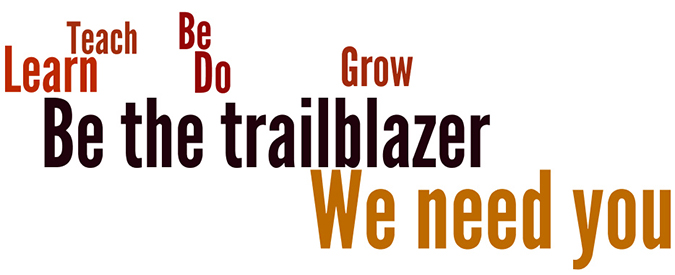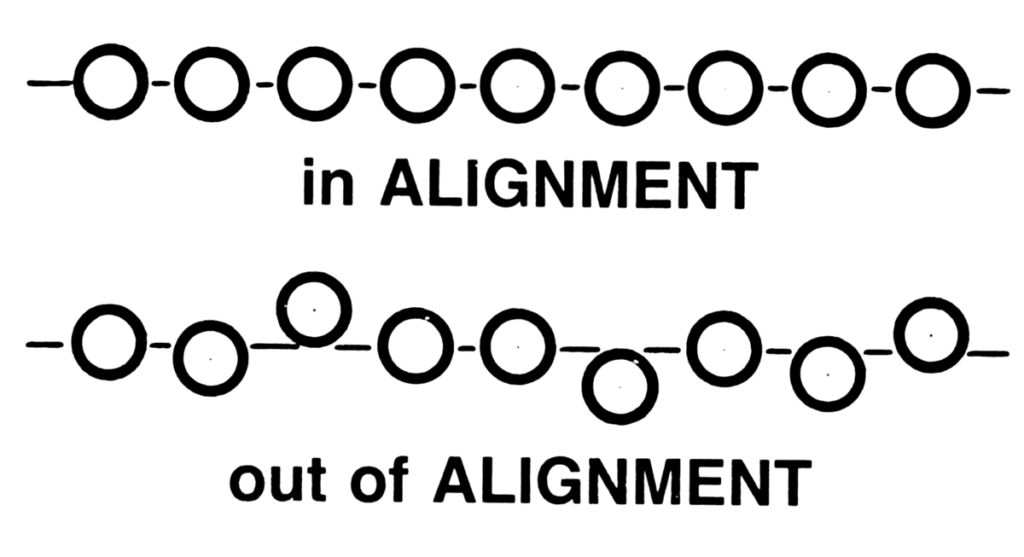In the last five years, I’ve been asked to write my job description at least twice that I can recall. You’d think this would be a blessing because you get to create your own position. Unfortunately, it rarely is, so I’ve written this to help you avoid the mistakes too many people make in this situation.
A job description should detail what a business needs from you, not what you can do. Some bosses ask you to write your own job description because they want you to feel control, they’re too busy, or they really don’t know what someone in your position should do and are hoping you’ll tell them.
It’s particularly bad in the digital marketing space – where typically managers either are chasing trends and buzzwords or are clueless when it comes to new engagement opportunities, tools, processes, and more.
The best way to start your job description
List every task or responsibility you could possibly imagine you, or your company, wanting in your job description. In the recent past, I’ve written variations of these:
- Run daily stand up meetings.
- Share company performance with team.
- Mentor the rest of the team.
- Represent the company in industry publications and blogs.
- Assess client needs and find products to address them.
- Manage reporting for a growing client set while ensuring continual agency progress toward automation.
Write as many as you can. You’re brainstorming. No idea is stupid.
Once you have your list, group similar tasks into responsibilities. In the list above, I can reasonably group the first three into a single responsibility. Act as a team leader to both the team staff and the rest of the company. Continue doing that until you’ve eliminated all tasks and only have responsibilities.
Tasks in a job description distract from the long-term vision and make it more like a manual. Any time you realize you’re getting into the specifics of how to do the job, pull back and rewrite it or group things together to answer these two questions. What am I doing? Why am I doing it? (I’ve added more potential questions to help you at the end of the post.)
Shape your responsibilities to fit the company’s needs.
One of the key failings of job descriptions we write for ourselves is that we write them to suit what we want and need and not what the company needs. In the list above, I remember removing Represent the company in industry publications and blogs because, as much as I thought that would be great for me, it wasn’t what the company needed from someone in that position.
Imagine that I had left it in and my boss had supported it. That would have started an unfortunate downward spiral that goes like this.
- I’m asked to write my own job description because my boss and company don’t know what they need from someone in my position.
- I write it to satisfy my wants and not the company’s needs.
- My company supports the job description as written without realizing I now have duties and responsibilities that compete with the company’s forward progress.
- Because I spend at least a portion of my time on things that do not address business needs, we do not grow as much as we should and that leads the company to have unhappy clients, hire less, lay off staff, put more scrutiny on my department, or (worse yet) maybe be unhappy with me.
- We have a difficult time agreeing on what the problem is because they originally endorsed my job description, which made me feel empowered and supported, but now, they’re telling me that I’m part of the problem.
- They change my duties without asking me to contribute this time, and as a result, I feel I’m no longer empowered to control my own job/career.
- This leads to resentment, which leads to less work or less effective work being done.
- Eventually, I start looking for a new job, where I think I’ll be empowered, or I get fired because I’m no longer as effective as I was when I felt I had the freedom to choose my own path.
If you can write your job description to fit the company’s needs, you can get picture of whether you’re the right person to do the job. If you’re not, can you grow into it? Do you want to? Finding out now ensures that you don’t end up in the downward spiral, and it gives you the opportunity to talk with your company about what you really want to do, while showing them that you recognize the needs of the business. Both of these are good things.
When you’re done with this stage, the ideal job description will have 8-12 responsibilities. Any more and you’re probably being unrealistic about how much one person can do. Any less and you show you’re not sure what you should be doing.
List the skills that pay the bills.
Look at the list of responsibilities and write down every skill and personal trait someone would need to satisfy these. If one of the responsibilities is Lead improvements in weekly client reporting, you might reasonably list skills and personal traits like:
- Advanced Excel, Access, and SQL experience.
- High attention to detail.
- Willing to leave no stone unturned in a search for answers.
- Passion for [client’s vertical].
- Willingness to travel for client meetings.
Once you’ve listed the job responsibilities, skills and personal traits should be simple. Just make a list. Think of the keyword-type of things you would search for in an online job search like “Excel,” “No travel,” “Passion for marketing,” etc.
When you’ve got your list, split it into two sections – Skills and Personal Traits. For my tastes, Skills is just a list of words and short phrases that shows that the person in this job needs experience with X, Y, and Z. Personal Traits is a little more wordy and gets into the personality of the employee. Who are they? What do they like? Where do they thrive? Why do they love this type of work? How do they do their job so well?
Time for some job description research.
Every job description needs a Title, Department, Reporting Structure, Location, Compensation (base, bonus, commission, etc), Vacation, and Scope.
Department, Reporting Structure, and Location should be straightforward. What department will this job be in, who will the person report to, and where will they work?
For Title, I use Linkedin Advanced Search and Google Trends to find relevant titles. If you know for example that you’re moving to the Director level and that you’ll be working in digital analytics, doing multiple Linkedin searches for variations of Director of Digital Analytics, Marketing Analytics Director, etc shows you how many people have that title. Google Trends gives you an idea of how frequently people search for that title so that you can see if it’s growing or shrinking in popularity.
Picking an unpopular title guarantees:
- You won’t be found when potential hiring managers search online in the future.
- You’ll always have to explain what you actually did in that specific job.
For Compensation and Vacation, my favorite tool is PayScale. For free, you can create a report based on what you currently know about the position and then find out what people get paid in your area, how much vacation they have, whether they get commissions or bonus, and more. Almost everything is on a range at PayScale though, so you need to assess your fitness for the job and then put an appropriate smaller range on your job description.
While writing this up, I saw that $85,000 (at the 10% mark) to $130,000 (at the 90% mark) per year was the range for a test report I created and that the majority of people in that position had 2 weeks of paid vacation, but that some had up to 6 weeks. If I was writing a job description for the position, I would look at how well I could do the job compared to everyone else that might be able/willing to do it and then set my goal Compensation and Vacation there. For the purposes of the job description, I would place an appropriate range around that to give my employer room to adjust and also to avoid the potential negative psychological impacts of me being over-optimistic and them bringing me down to Earth by adjusting it down.
If you set your sights unrealistically high, either you will be disappointed when your company adjusts down or your company will be disappointed when they realize they’re overpaying you.
To finish your research, look at everything you’ve written so far and consider the scope of the position. Should you be working with people from the entire company, with all of the clients, or just a subset? Should you be only focused on a region or territory or thinking about, traveling to, or otherwise working with the whole country or world? How about effect within the company? Will you being making decisions that change the direction of the company or focused on a specific aspect of the business?
Putting together your job description
As of now, you should be able to list these in your job description:
- Title
- Location
- Department
- Reporting Structure
- Responsibilities
- Scope
- Personal Traits
- Skills
- Compensation
- Vacation
- Experience
The last big step is to look at everything you’ve put together and write the Position Summary, which I typically place before Responsibilities. The key here is to now put away everything you’ve been working on and write a 3-5 sentence, high level description of the job you want. Don’t worry about whether it gels with everything in the job description. Just write what your dream job would be.
One Position Summary template I really like is:
The [Job Title] focuses on [Client X, Company issue Y, Vertical Z, etc]. He [insert one thing you would dream of being able to do every day]. Additionally, the [Job Title] [insert the first thing that you would love to do that is also critical for the business]. He [a personality trait and set of skills that make that describe the ideal candidate]. Finally, the [Job Title] [write about the business effects of this person’s work].
Once you’ve done this, paste the Position Summary into your job description and make final changes to align the Summary and everything else you’ve put together. Hopefully at this point, there are very few differences between your Position Summary and the Responsibilities. If there are though, keep in mind that a job description has to address the needs of the business or else you’ll end up in the downward spiral I showed earlier.
If you can’t align the job description with what you really want to do or are suited to do, talk with your company. This is an opportunity to build a clear development path while also helping your boss see that you understand, and are committed to, the needs of the business. Managers appreciate that. It’s a huge advantage to have employees that get the big picture of the business.
Final notes
If you get stuck at any point, try answering these questions:
- What are the trends my job addresses?
- What are the company needs and problems my job addresses?
- How do I make my boss look good?
- What possibilities can I see?
- What purpose do I serve?
- How will I be used?
- Who needs me?
- What platforms work best for this job?
- How can I find the best solutions?
- What people can help me make the best decisions?
Also, consider using these verbs in your job description:
- Communicate
- Plan
- Manage
- Monitor/report
- Evaluate
- Control
- Produce
- Maintain
- Create/Develop
- Recruit
- Train
- Developing policy
- Formulate
And lastly, these are some of the guidelines I recommend sticking to:
- Limit Responsibilities to 8-12 short points.
- Limit to responsibilities, not tasks.
- Group tasks into responsibility areas.
- Refer to manuals when possible rather than over-explaining.
- Clarify employer expectations.
- Provide a measurement basis, but avoid putting targets in the job description.
- Place the position in the org chart.
- Prevent arbitrary interpretation of the role.
- Define the skill set.
- Write it to match your dream job.
- Keep long-term business objectives in mind.
- Job descriptions should be written to fulfill a business need, not detail what an employee can do.
Have you ever written your own job description? Are there other recommendations or guidelines you would add to this?








